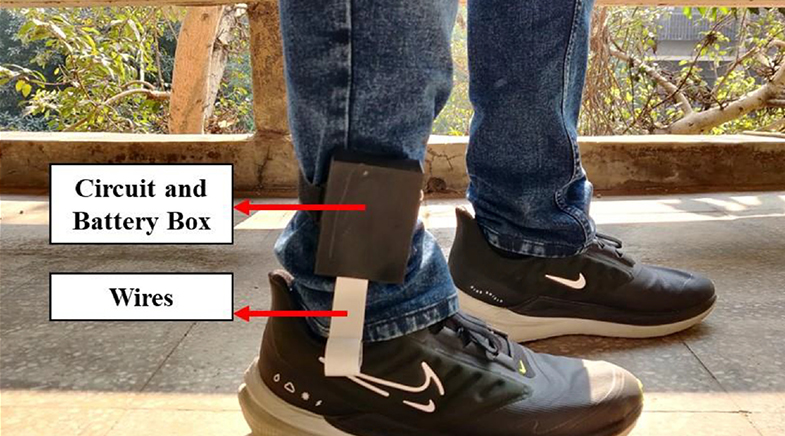The birds and beasts
-
- from Shaastra :: vol 02 issue 03 :: May - Jun 2023

An engrossing and educative tour of the perceptual wonderworld of animals.
Norgay, my pet calico cat, is watching over my shoulder as I type this. I doubt she'll object to my invocation of her name. Nothing seems to disturb her feline equanimity so long as three life conditions are met: I ply her with treats on demand; I play with her when she's feeling frisky; and I leave her alone to sleep the rest of the time. There are times when I wonder, to paraphrase philosopher Thomas Nagel (bit.ly/norgay-bat), what it would be like to be a cat. But that sensory world is virtually impenetrable – for reasons that Nagel outlined in his essay. And yet, as Pulitzer Prize-winning journalist Ed Yong fleshes out in exquisite detail in this delightful and much-acclaimed book, even attempting to enter into the perceptual wonderworld of animals – and try to experience their world as they do – has the potential to expand our minds and enrich our lives.
That sensory bubble – or Umwelt, a derivative of the German word for 'environment', as defined by biologist Jakob von Uexküll – is unique to every species, but it represents more than just the "surroundings". Rather, it is the part of those surroundings "that an animal can sense and experience – its perceptual world", notes Yong. Strikingly, many creatures may inhabit the same physical space, and yet have completely different Umwelten (environments). Norgay, for instance, can see in the dark whereas I'm "blind as a bat" – as the factually incorrect idiomatic expression goes: after all, bats have acute night vision, plus a sonar sense. Yong educates me that Norgay's nocturnal vision is made possible by a 'tapetum', a reflective layer behind her retina, which allows her to grab every last light photon she can. The same tapetum is also the reason why Norgay's eyes shine spookily in the dark.
CELEBRATING DIVERSITY
Yong's book is a celebration of the infinite variety of this wonderful world. "This is not a book of lists," he emphatically states upfront, "in which we childishly rank animals according to the sharpness of their senses and value them only when their abilities surpass our own." He then takes us on a trans-Umwelt sensory excursion, as experienced through the prisms of smell and taste; vision; colour; pain; and heat. All along the way, he enthralls us with curious narratives about animals, which are simultaneously educative and entertaining. The Japanese yellow swallowtail butterfly has 'eyes' (or more precisely, photoreceptors) on its genitals; starfish see with the tips of their arms. Crickets have ears on their knees; locusts and cicadas have them on their abdomens. Leopard urine smells of popcorn. Cats, spotted hyaenas, and many other carnivorous mammals have over time lost the ability to taste sugar. Giant whales have a volleyball-sized sensor at the tip of their lower jaw, which was discovered only in 2012...
How precisely does stepping outside our Umwelt and attempting to enter into those of other species expand our mind? Citing neuroscientist Malcolm MacIver's work, Yong reasons that when some fish began to adapt to living on land some 400 million years ago, their Umwelt changed decisively: they could, for instance, see over much longer distances than they could in water. This, in turn, spurred the evolution of advanced mental abilities – such as planning and strategic thinking. "Just as their Umwelten expanded, so did their minds," writes Yong.

Similarly, he argues, paying attention to other animals can help us break free of the shackles of our own Umwelt. Aristotle, for instance, reckoned that both humans and other animals had only five senses: sight, hearing, smell, taste, and touch. But modern philosophical theorists believe humans have at least two more: proprioception, or an awareness of one's own body; and equilibrioception, the sense of balance. But even these are limiting: the boundaries of our perceptual frontiers make the Umwelten of others opaque to us. Therefore, paying attention to other animals' senses – and attempting to experience their world as they do – expands and deepens our own world, reasons Yong.
SENSORY POLLUTION
Just as important, Yong awakens readers to the perils of the "sensory pollution" that humans inflict on animals, forcing them to enter into our perceptual world. This extends across the spectrum from light pollution (which disorients birds and flying insects and even sea turtle hatchlings) to noise pollution (which shrinks animals' perceptual world) to environmental pollution. Taken together, they have the effect of diminishing the diversity of the animal world. A better understanding of the senses, notes Yong, can show us how we're defiling the natural world – but it can also equip us with the tools to save it.
Have a
story idea?
Tell us.
Do you have a recent research paper or an idea for a science/technology-themed article that you'd like to tell us about?
GET IN TOUCH














